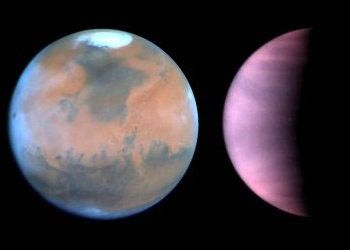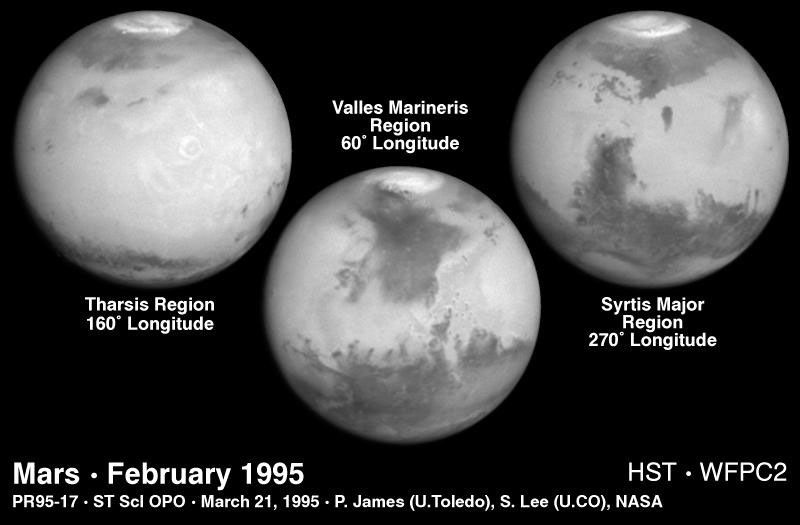1 min read
Hubble Monitors Weather on Mars and Venus

What's the weather for Mars and Venus? The Hubble telescope has given astronomers a peak. The telescope is serving as an interplanetary weather satellite for studying the climate on Earth's neighboring worlds, Mars and Venus.
To the surprise of researchers, Hubble is showing that the Martian climate has changed considerably since the unmanned Viking spacecraft visited the Red Planet in the mid-1970s. The Hubble pictures indicate that the planet is cooler, clearer, and drier than a couple of decades ago. In striking contrast, Hubble's observations of Venus show that the atmosphere continues to recover from an intense bout of sulfuric "acid rain," triggered by the suspected eruption of a volcano in the late 1970s.
- Object NameObject NameA name or catalog number that astronomers use to identify an astronomical object.Mars, Venus
- Release DateMarch 21, 1995
- Science ReleaseHubble Monitors Weather on Neighboring Planets
- CreditScience Release Credit: Philip James (University of Toledo), Steven Lee (University of Colorado), NASA
Related Images & Videos

Mars at Opposition: February 1995
These NASA Hubble Space Telescope views provide the most detailed complete global coverage of the red planet Mars ever seen from Earth. The pictures were taken on February 25, 1995, when Mars was at a distance of 65 million miles (103 million km). To the surprise of researchers,...

Springtime on Mars
This NASA Hubble Space Telescope view of the planet Mars is the clearest picture ever taken from Earth, surpassed only by close-up shots sent back by visiting space probes. The picture was taken on February 25, 1995, when Mars was at a distance of approximately 65 million miles...
Share
Details
Last Updated
Aug 17, 2025
Contact
Media
Claire Andreoli
NASA’s Goddard Space Flight Center
Greenbelt, Maryland
claire.andreoli@nasa.gov
































